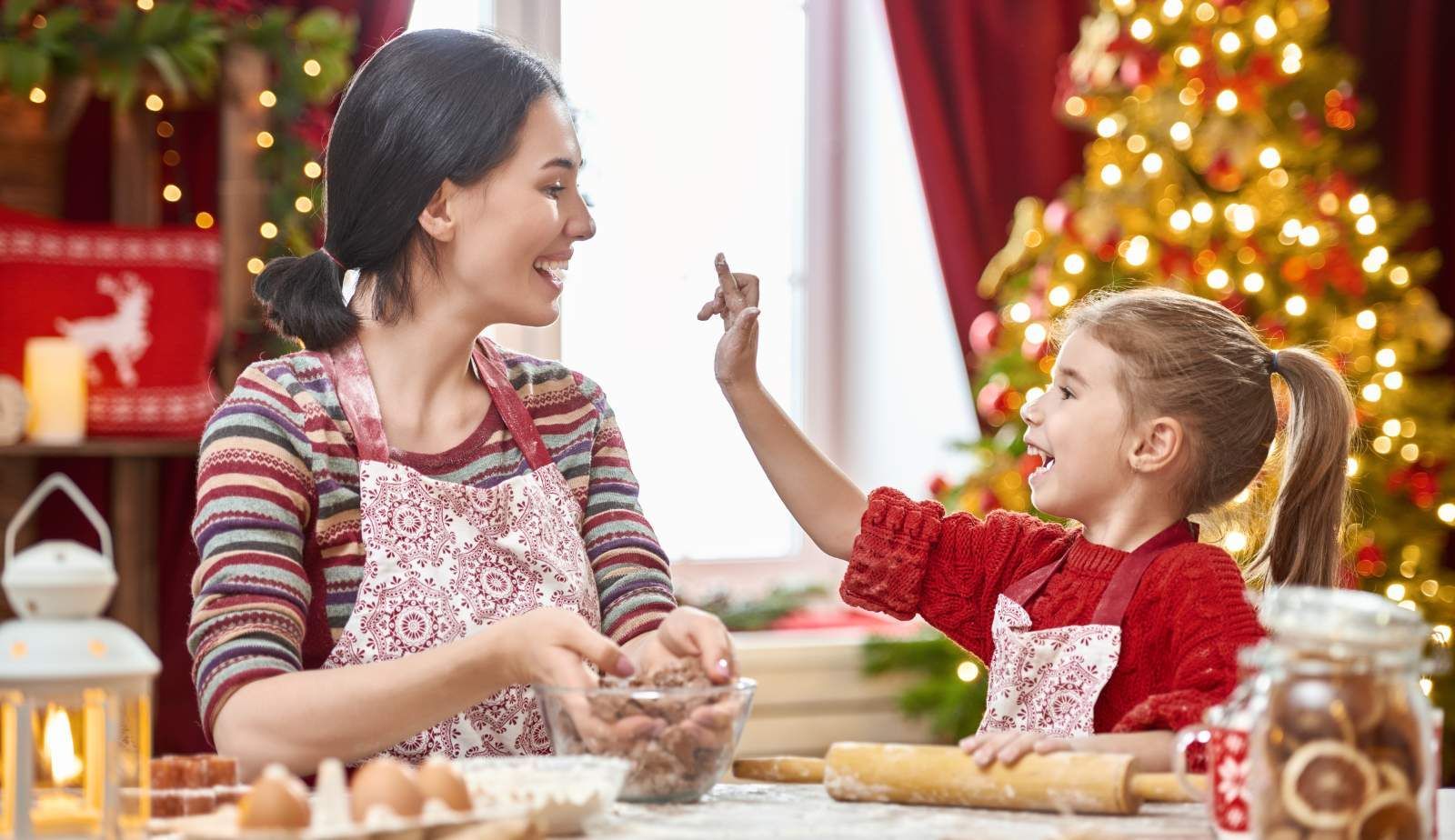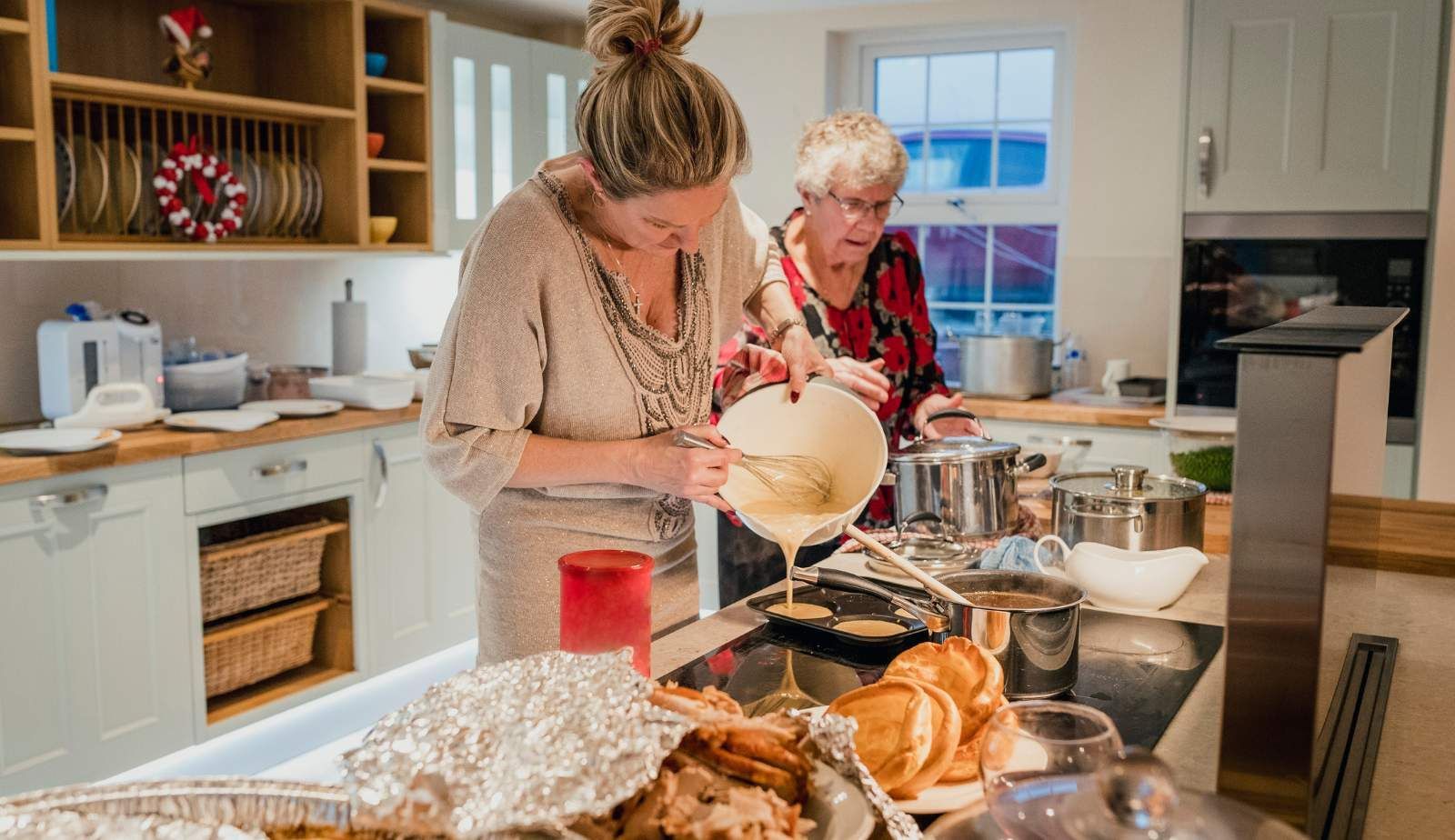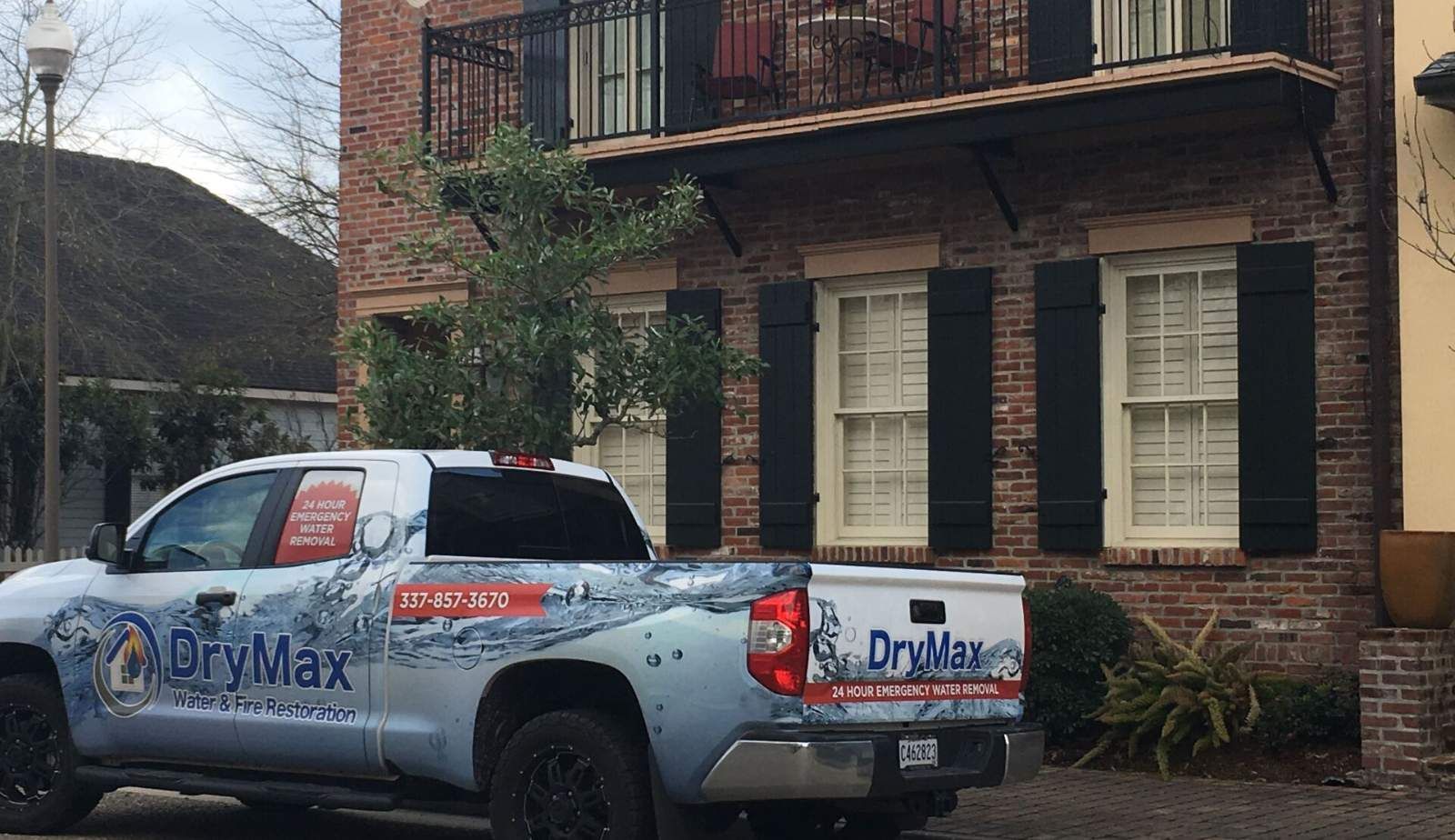Holiday Cooking Fire Safety: Essential Tips for Protecting Your Louisiana Kitchen
As the holiday season approaches, many in Louisiana look forward to preparing cherished traditional dishes that bring family and friends together. However, this busy cooking period also poses increased risks for kitchen fires. Understanding holiday cooking safety can significantly reduce the chances of a fire, ensuring that celebrations can continue without incident.
In a Louisiana kitchen, where frying is a popular cooking method, particularly for dishes like gumbo and turkey, safety precautions must be taken seriously. Proper handling of fryers is essential to prevent accidents and ensure a safe cooking environment. Experts suggest maintaining a clean cooking area, keeping flammable materials at a distance, and never leaving hot oil unattended.
Incorporating best practices for fire prevention can make a substantial difference during the hectic cooking days of the holiday season. By remaining vigilant and adhering to safety tips, individuals can protect not only their kitchens but also their loved ones as they enjoy the festive spirit.
Understanding Fire Risks in the Kitchen
The kitchen presents several fire risks, particularly during the holiday season when cooking activities increase. Awareness of these risks and proper preventative measures are essential for a safe cooking environment.
Common Causes of Kitchen Fires
Cooking fires are the leading cause of home fires, often resulting from unattended cooking. Many incidents occur when food is left cooking without supervision, especially on stovetops or in ovens.
Another significant risk is frying, a common practice in Louisiana cuisine. Fryers can easily tip over or splatter hot oil, leading to severe accidents.
Faulty or defective appliances also contribute to kitchen fires. Regular maintenance and prompt repairs can prevent electrical malfunctions from occurring. According to experts, keeping flammable materials away from heat sources is critical to reducing fire hazards.
Identifying Fire Hazards
Identifying fire hazards in the kitchen is vital for prevention. Common hazards include paper towels, dish cloths, and packaging materials, which should be kept away from cooking surfaces.
Also, cluttered countertops can obstruct safe cooking practices, increasing the risk of accidents. Maintaining a clean space allows for better handling of cooking tasks.
Homeowners should regularly check electrical cords for damage and ensure appliances are plugged into proper outlets. Additionally, the presence of a functional fire extinguisher within reach is crucial for immediate response to any fire that may arise. Proper fire safety awareness can significantly minimize kitchen fire risks.

Best Practices for Fire Prevention
Effective fire prevention is crucial, especially during the holiday cooking season. Maintaining a clean cooking environment and using appliances correctly are key components of ensuring safety in the kitchen.
Maintaining a Clean Cooking Area
A clean kitchen reduces the risk of fires significantly. Grease buildup can easily ignite, so it is essential to regularly wipe down surfaces.
Best practices include:
- Daily Cleaning: Use a damp cloth to clean stovetops and counters after cooking.
- Contain Clutter: Keep flammable items such as dish towels and paper products away from the stove.
- Dispose of Waste Properly: Avoid letting food scraps accumulate; dispose of them promptly in a sealed container.
Regularly check for any flammable objects in the cooking area. By ensuring a tidy space, the likelihood of accidental fires can be greatly reduced.
Proper Use of Cooking Appliances
Understanding how to safely use cooking appliances is vital for preventing fires. Each device has specific guidelines that should be followed.
Key points to consider:
- Fryers: When using a fryer, always monitor the temperature. Overheating oil can lead to flare-ups. It’s crucial to keep the fryer on a stable, uncluttered surface.
- Stove Safety: Never leave cooking unattended, especially when frying or sautéing. If distractions arise, turn off appliances until returning.
- Electrical Appliances: Ensure that cords are in good condition and not in contact with water.
Being mindful of these practices will help protect kitchens, particularly during festive cooking times in Louisiana.
Safe Handling of Fryers and Flammable Items
During the holiday season, the kitchen can become a hectic environment filled with festive cooking. Proper handling of fryers and flammable items is critical to preventing cooking fires, particularly in Louisiana where fried dishes are popular.
Deep Frying Safety
When deep frying, the temperature of the oil is crucial. Always use a deep fryer designed for outdoor cooking to prevent fires indoors. The cooking oil should be heated gradually and monitored using a thermometer. The recommended cooking temperatures typically range between 325°F to 375°F.
It is important to never leave hot oil unattended. If a grease fire occurs, turn off the heat and cover the pot with a metal lid to smother the flames. Do not use water, as it can cause the fire to spread. For safety, keep a class K fire extinguisher nearby, specifically designed for kitchen fires.
Precautions with Flammables
In the kitchen, flammable items must be stored properly to reduce fire risks. This includes keeping paper towels, dish cloths, and other combustible materials away from the stove and fryer. Store items beyond a safe distance of at least three feet from any heat source.
Additionally, ensure that the cooking area is clutter-free. Clear any spills immediately, as accumulations of grease can ignite unexpectedly. It’s wise to keep baking soda at hand. In case of smaller grease fires, it can effectively extinguish flames before they escalate. Proper preparation can make all the difference during holiday cooking.

Addressing Unattended and High-Risk Cooking
Proper attention to cooking activities is vital during the busy holiday season, especially in Louisiana where rich traditions involve high-risk cooking methods. Being proactive can mitigate the dangers of unattended cooking and ensure fire prevention.
Avoiding Unattended Cooking
Leaving the kitchen while cooking is one of the leading causes of home fires. It's essential to designate a responsible adult to monitor the stove or oven at all times.
- Cooking Timers: Use timers to remind when to check on food.
- Stay Close: If multi-tasking, make sure someone is available to keep an eye on the cooking.
If leaving the kitchen is unavoidable, turn off the heat or move food to a safe area. This practice prevents potential fires and ensures that unattended cooking doesn’t lead to emergencies.
Managing High-Risk Cooking Methods
Certain cooking methods, like frying or using a deep fryer, present higher risks, especially when preparing traditional dishes.
- Fryer Safety: Always place fryers outdoors on stable surfaces away from structures. Monitor the oil temperature closely to prevent overheating and potential flames.
- Keep a Fire Extinguisher: Equip the kitchen with a class K fire extinguisher specifically designed for grease fires.
Regularly inspect equipment and ensure that it is in good condition. Proper preparation and awareness of these risks can significantly enhance kitchen safety during the holiday festivities.
Implementation of Fire Safety Equipment
Proper installation and regular maintenance of fire safety equipment are essential in ensuring a safe cooking environment during the holiday season. The following practices focus on the crucial aspects of smoke alarms and fire extinguishers to prevent kitchen fires effectively.
Placement and Maintenance of Smoke Alarms
Smoke alarms must be strategically placed throughout the kitchen and adjacent areas. They should be installed on ceilings or high on walls, ensuring they are at least 10 feet away from cooking appliances to reduce false alarms.
Regular maintenance is critical. Testing smoke alarms monthly ensures they are functioning properly, and replacing batteries at least once a year is recommended. Smoke alarms should be replaced every 10 years, as older models may not detect smoke effectively.
Keeping smoke alarms clean and free from dust enhances their performance. This equipment is vital as it provides early warning, giving occupants time to respond to a potential fire.
Using Fire Extinguishers Correctly
Having a fire extinguisher in the kitchen is crucial for quick action against small fires. It is advisable to have at least a Class K extinguisher, which is effective for cooking oil and grease fires, commonly encountered in Louisiana cooking.
Before using a fire extinguisher, one must remember the acronym PASS: Pull the pin, Aim low at the base of the fire, Squeeze the handle, and Sweep side to side. It's important to keep the extinguisher within easy reach and ensure everyone knows its location.
Regular checks, such as inspecting the pressure gauge and ensuring the nozzle is unobstructed, are vital for maintaining readiness. Having an accessible fire extinguisher can significantly mitigate potential damage and enhance safety in case of an emergency.

Emergency Preparedness and Response
Ensuring a safe kitchen environment during the busy holiday season includes preparing for emergencies. Having a fire escape plan and knowing first aid procedures for cooking fire injuries are critical components of kitchen safety.
Creating a Fire Escape Plan
A well-thought-out fire escape plan is essential for every household. It should clearly outline multiple escape routes from the kitchen and other rooms.
- Identify Exits: Designate two exits from each room, such as doors and windows.
- Practice Routes: Conduct regular practice drills with everyone in the household to ensure familiarity with the escape routes.
- Meeting Point: Choose a safe spot outside where everyone can gather after escaping.
Place smoke detectors in strategic locations, particularly near the kitchen. Encourage family members to check these alarms monthly. During busy cooking periods, reminders to stay present in the kitchen can prevent accidents before they occur.
First Aid for Cooking Fire Injuries
In the event of a cooking fire injury, knowing basic first aid can be life-saving. The American Red Cross recommends several key actions for treating burns:
- Cool the Burn: Immediately place the affected skin under cool (not cold) running water for 10-20 minutes.
- Cover the Burn: Apply a clean, non-stick bandage over the burn area to protect it from infection.
- Avoid Home Remedies: Do not apply ice, butter, or ointments, which can worsen the injury.
Seek professional medical assistance for severe burns or if blisters develop. Being prepared with a basic first aid kit in the kitchen can help address minor injuries quickly. Overall, understanding how to manage fire-related injuries enhances kitchen safety during holiday cooking activities.
Promoting Kitchen Fire Safety During the Holidays
During the holiday season, preparing meals can be exhilarating yet risky. It is essential to remain vigilant about fire risks while celebrating. Implementing specific safety measures can help prevent kitchen fires and keep traditional Louisiana cooking enjoyable.
Specific Risks During the Holiday Season
The hustle and bustle of holiday cooking often leads to increased fire hazards. According to the American Red Cross, unattended cooking is a leading cause of kitchen fires. Keeping an eye on food while it cooks is crucial, especially when using high heat or frying.
Some key fire safety tips include:
- Stay in the kitchen: Always remain present when food is cooking.
- Use timers: Setting timers can help keep track of cooking times and prompt checks.
- Keep flammable items away: Ensure that towels, paper, and other flammable materials are stored away from heat sources.
Special attention should also be given to deep frying, common in Louisiana cuisine. Fryers can easily ignite if not monitored properly.
Cultural Considerations for Louisiana Dishes
Louisiana cooking often features fried foods, like gumbo or crawfish, which can present unique risks. Deep frying should not only follow standard safety practices but also cultural customs.
When using a fryer, consider these tips:
- Thaw the food: Ensure items like turkey are fully thawed to minimize oil splatter.
- Keep a safe distance: Place the fryer outdoors, away from buildings and trees.
- Have a fire extinguisher: Always have an appropriate extinguisher within reach.
Additionally, maintain a clean cooking environment. Greasy surfaces can ignite easily, so frequent cleaning is critical during intensive cooking sessions. Following these guidelines can significantly reduce fire risks while enjoying festive Louisiana dishes.
Frequently Asked Questions
This section addresses key concerns regarding fire safety in the kitchen during the busy holiday season. Specific advice includes safe practices for using turkey fryers, responding to kitchen fires, and preparing Louisiana-style dishes.
What steps can be taken to ensure fire safety when using turkey fryers during holiday cooking?
To maintain fire safety with turkey fryers, they should always be used outdoors, away from flammable materials. It is essential to fill the fryer with the right amount of oil to prevent overflow. A thermometer helps monitor the oil's temperature to avoid overheating.
How can one effectively respond to a kitchen fire in a home environment?
In the event of a kitchen fire, the first step is to remain calm. It is vital to turn off the heat source and use a fire extinguisher on small fires. If the fire spreads, evacuating the area and calling emergency services is crucial.
What best practices should be followed for cooking safety during Thanksgiving and other high-cooking holidays?
During busy cooking days, keeping the kitchen organized is important. Always keep a watchful eye on cooking food and avoid distractions. Ensuring that towels and utensils are away from heat sources can help prevent fires.
In what ways can DryMax fire prevention tips be applied specifically to Louisiana-style holiday cooking?
DryMax emphasizes regular maintenance of cooking appliances and the use of flame-retardant materials. For Louisiana-style cooking, which often involves frying, following specific fryer safety tips, such as monitoring oil levels, is critical.
What are the recommended materials and tools to have on hand for kitchen fire emergencies?
Essential items include a fire extinguisher rated for kitchen use, baking soda for small grease fires, and a fire blanket. Smoke alarms should be installed and regularly tested to ensure proper function.
How can traditional Louisiana holiday dishes be prepared safely to minimize the risk of kitchen fires?
To minimize fire risks while preparing traditional dishes, chefs should use stovetops securely and avoid leaving cooking items unattended. Employing appropriate cooking methods, like simmering rather than frying when possible, can significantly reduce hazards.
You might also like
DryMax Restoration Blogs




